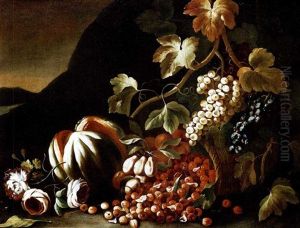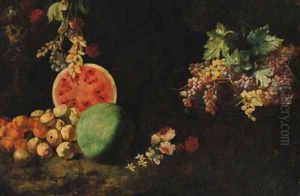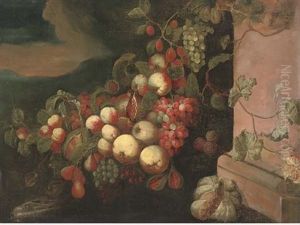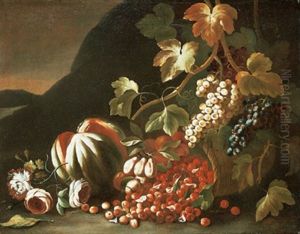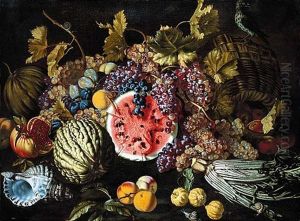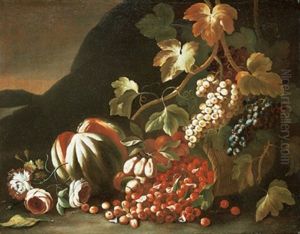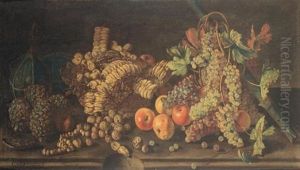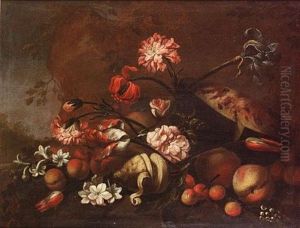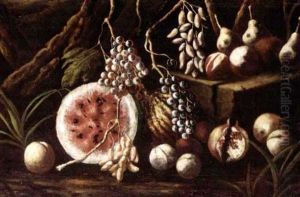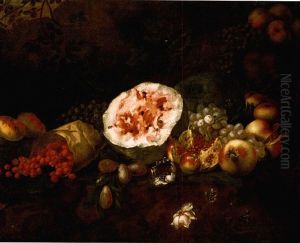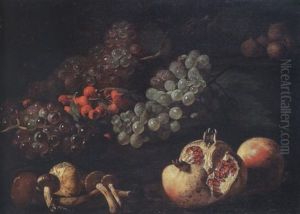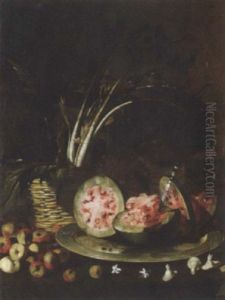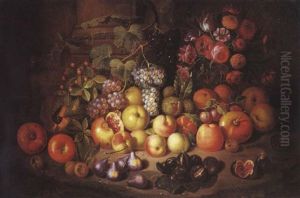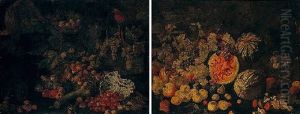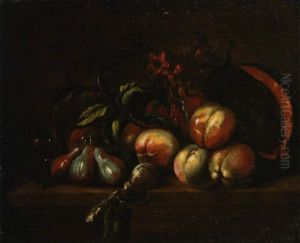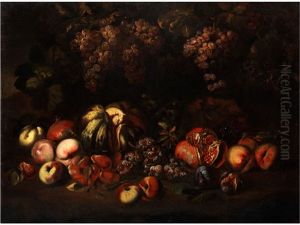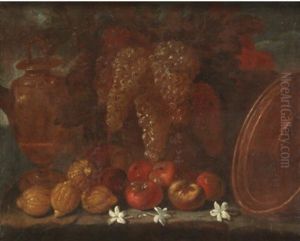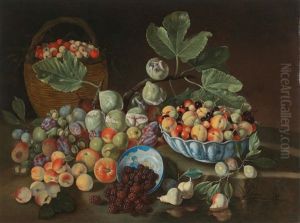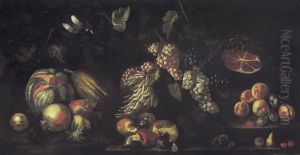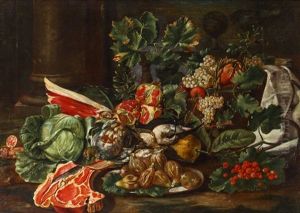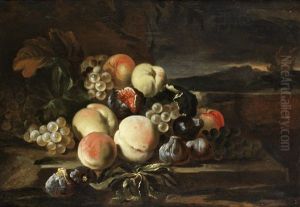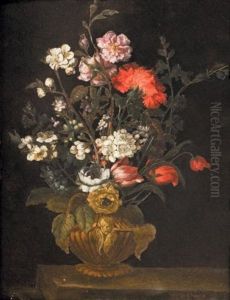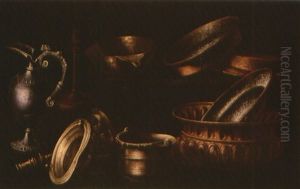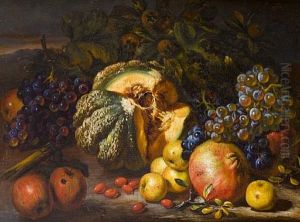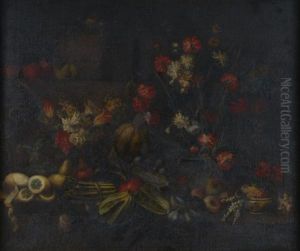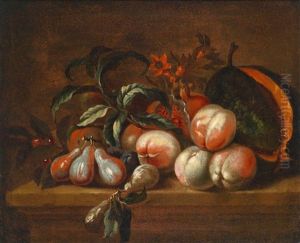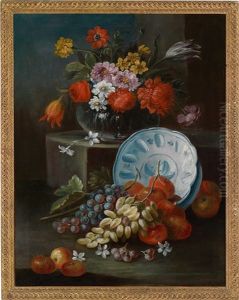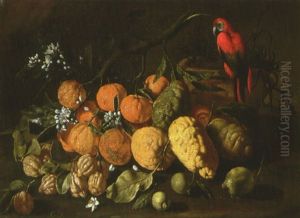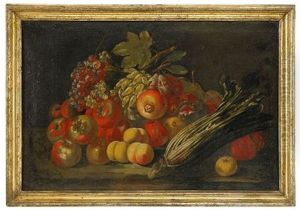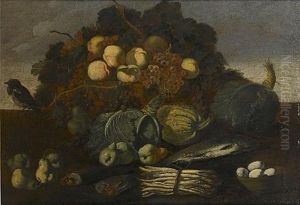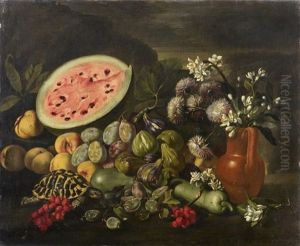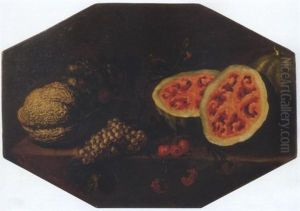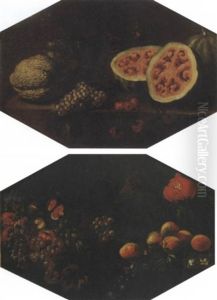Giuseppe Ruoppolo Paintings
Giuseppe Ruoppolo was an Italian Baroque painter known primarily for his lush and vibrant still-life paintings, which were executed with a characteristic exuberance and detailed depiction of flowers, fruits, and vegetables. He was born in 1629 in Naples, which was, at the time, a thriving center for artistic production and innovation, particularly in the genre of still life.
During the 17th century, Naples was under Spanish rule, which facilitated the exchange of cultural and artistic ideas between Italy and Spain. Ruoppolo's work was influenced by this environment and by the Caravaggesque style that was popular during his lifetime, exemplified by a dramatic use of light and shadow, as well as a realistic approach to subject matter. However, Ruoppolo's paintings also possess a unique vibrancy that sets them apart from the more somber tonalities often associated with Caravaggio's followers.
Ruoppolo was a part of a family of painters, and his brother Giovanni Battista Ruoppolo was also a notable still-life painter. Giuseppe was likely trained in the Neapolitan workshop of Paolo Porpora, another prominent still-life artist of the time, and he was influenced by the works of other local painters such as Giovanni Battista Recco and Luca Forte. Ruoppolo's works often featured arrangements of fruit, sometimes accompanied by flowers or shells, arranged on stone ledges against a dark background. His compositions were dynamic and richly textured, showcasing a deep understanding of the natural world and an ability to render its forms with both accuracy and artistic flair.
Ruoppolo's work found favor with the local aristocracy and ecclesiastical patrons, reflecting the growing interest in naturalism and the depiction of everyday objects with an almost luxurious attention to detail. His paintings were not just celebrations of nature's bounty; they also carried symbolic meanings, often alluding to the transience of life and the idea of vanitas, a common theme in still-life painting of the period.
Giuseppe Ruoppolo's contribution to the field of still-life painting was significant in establishing the genre's respectability and popularity in Southern Italy, and his works continued to influence Neapolitan painters well into the 18th century. He died in 1693, leaving behind a body of work that remains appreciated for its vibrant color palette, lively compositions, and exquisite portrayal of texture and light.
